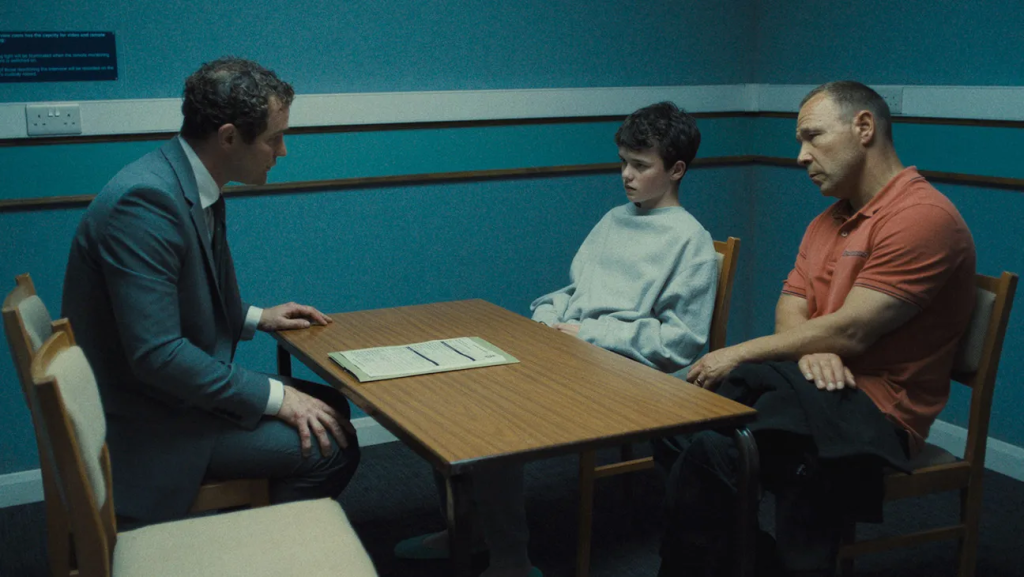
The ultimate sign of television’s arrival as a cinematic art form may be the medium’s growing obsession with the oner — the uninterrupted single-shot technique that was long part of the visual language of big-screen auteurs.
A six-minute tracking shot was, along with the presence of Matthew McConaughey, the prestige calling card for the first season of True Detective. Shows as differently received as The Bear and Monsters: The Lyle and Erik Menendez Story have generated their peak buzz from whole episodes presented in a continuous take. Jeon Woo-Sung’s wild Korean thriller Bargain raised the bar even further by telling its story in six episodes, each shot to at least resemble a oner.
In the second episode of Apple’s upcoming Hollywood satire The Studio, appropriately titled “The Oner,” Seth Rogen’s studio exec says of one particularly technically ambitious shot, “The oner is the ultimate cinematic achievement. It’s like the perfect marriage of artistry and technicality.”
He’s responding to Ike Barinholtz’s Sal, who contends, “Audiences do not care about this shit.”
It might be tempting to follow Sal’s lead and review Netflix’s new legal thriller Adolescence with nary a mention of its core conceit, which is that each of its four episodes is filmed in a continuous take by director Philip Barantini and cinematographer Matthew Lewis.
Sure, the production process behind Adolescence is impressive — if not “unique” — and occasionally astonishing, but if the aesthetic had upstaged the narrative, the resulting series would have amounted to little more than a stunt.
Fortunately, the camerawork mostly complements both a plot with unsettling contemporary resonance and the human characters, played exceptionally well by the likes of Stephen Graham, Ashley Walters, Erin Doherty and spectacular newcomer Owen Cooper.
The series begins with British homicide detectives Bascombe (Walters) and Frank (Faye Marsay) leading an audacious early morning raid on the Miller household, arresting 13-year-old Jamie (Cooper) for murder as his parents (Graham and Christine Tremarco) and older sister (Amélie Pease) watch in confusion and horror.
In the first episode, the camera follows the raid, the journey to the (thankfully) nearby police precinct and the earliest interrogations, as audiences and the Miller family learn the nature of the accusation against Jamie, who consistently protests his innocence.
Subsequent episodes jump forward days, and then weeks and months, to cover first Bascombe and Frank’s investigation, as they attempt to speak with other students at Jamie’s school; then the pre-trial period as Jamie is evaluated by a psychologist (Doherty); and then the lives of the Miller family. As structured by creators Graham and Jack Thorne, Adolescence keeps the tragic circumstances at the forefront, rather than any single protagonist or antagonist. Only Graham’s Eddie appears in more than two episodes (Jamie is heard in a third), but each episode delivers a fully-realized hour-long arc and a different effect generated by the one-shot method (which Barantini previously utilized, with Graham as star, in the restaurant drama Boiling Point).
In the first episode, Barantini builds oppressive and intentionally evasive suspense, making the audience’s yearning for explanation and hand-holding mirror the frustration of the Miller family. Instead of placing one blissful cut allowing viewers the relief of skipping from arrest to the presentation of evidence and charges, Barantini takes us through the procedural elements inflicted on Jamie — finger-printing, the discomfort of invasive tests, the banality of an institutional corn flakes breakfast.
In the second episode, Barantini conjures the cacophony that sometimes obscures the truth as the detectives make their way up and down the hallways, staircases and classrooms of a school, encountering dozens of students and teachers, even accompanying them on a chaotic fire drill. It’s easily the showiest of the four episodes, and the one that most frequently drew my attention to the rehearsal and orchestration that went into it.
The third episode is a two-hander, with Cooper and Doherty going head-to-head in an unfolding mind game — a conversation spiked with moments of anger, vulnerability and horror, contained primarily in a single room, with none of the mechanical mastery required by the previous episode. (Given how great they were together in Hulu’s recent A Thousand Blows, it’s very slightly disappointing that Doherty and Graham share no scenes here together.)
Then the series concludes with an emotional roller-coaster, in which the highs and lows of a birthday yield remarkable volatility and versatility from Tremarco, Pease and especially Graham, who has never been better.
Throughout, the camerawork is audacious, but more upon reflection than in terms of visceral pyrotechnics. Only the second episode contains any moments that appear to be augmented by visual effects (and I’m not even certain of that); the series isn’t awash in the sort of whip-pans and masked cuts that audiences have been trained to expect with one-shot trickery. I much preferred marveling at the choreography and consistency of the performances — what Doherty and Cooper pull off in that third hour is amazing if you pause to consider the required preparation and psychological stamina — rather than the usual “How’d they pull THAT off?” gawking.
The mystery of what Jamie did or didn’t do is relevant but secondary to bigger questions about masculinity — be it toxic or fragile — in a world of bullying, revenge porn and noxious virtual role models like the name-checked Andrew Tate. The nightmare of murder gets a little lost in the more pervasive nightmare of, well, adolescence. The series is less effectively empathetic toward the victim or toward the plight of adolescent girls — though perhaps that’s a reflection of societal indifference. The pain of that indifference is captured by Fatima Bojang’s vividly fierce and wounded brief turn as the victim’s best friend, who clearly isn’t getting the attention or help she deserves.
Even more than the technical gimmick, it’s in large part thanks to acting like Bojang’s that the resolutely dark, downbeat Adolescence is able to avoid feeling like a protracted episode of Law & Order: Special Victims Unit.